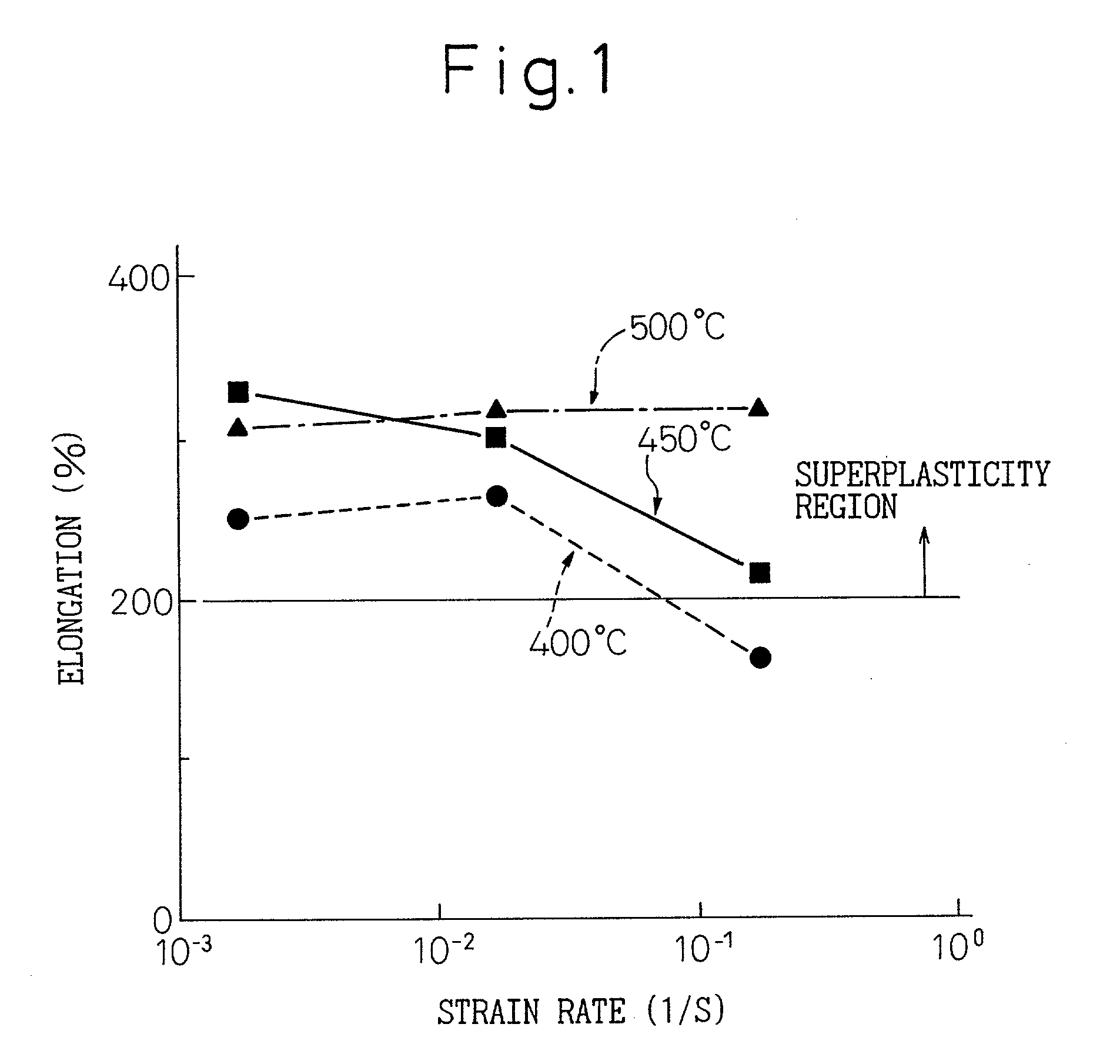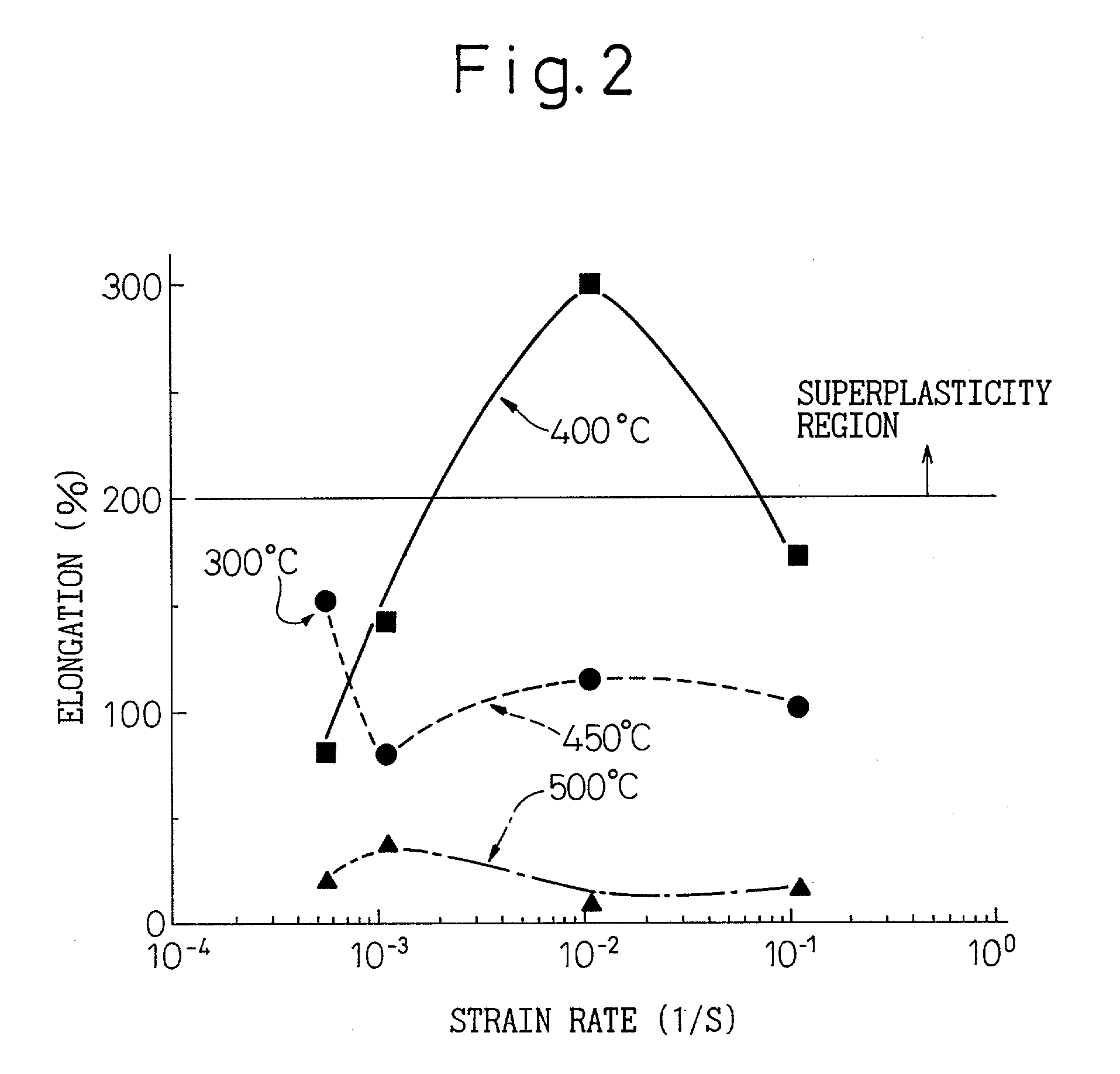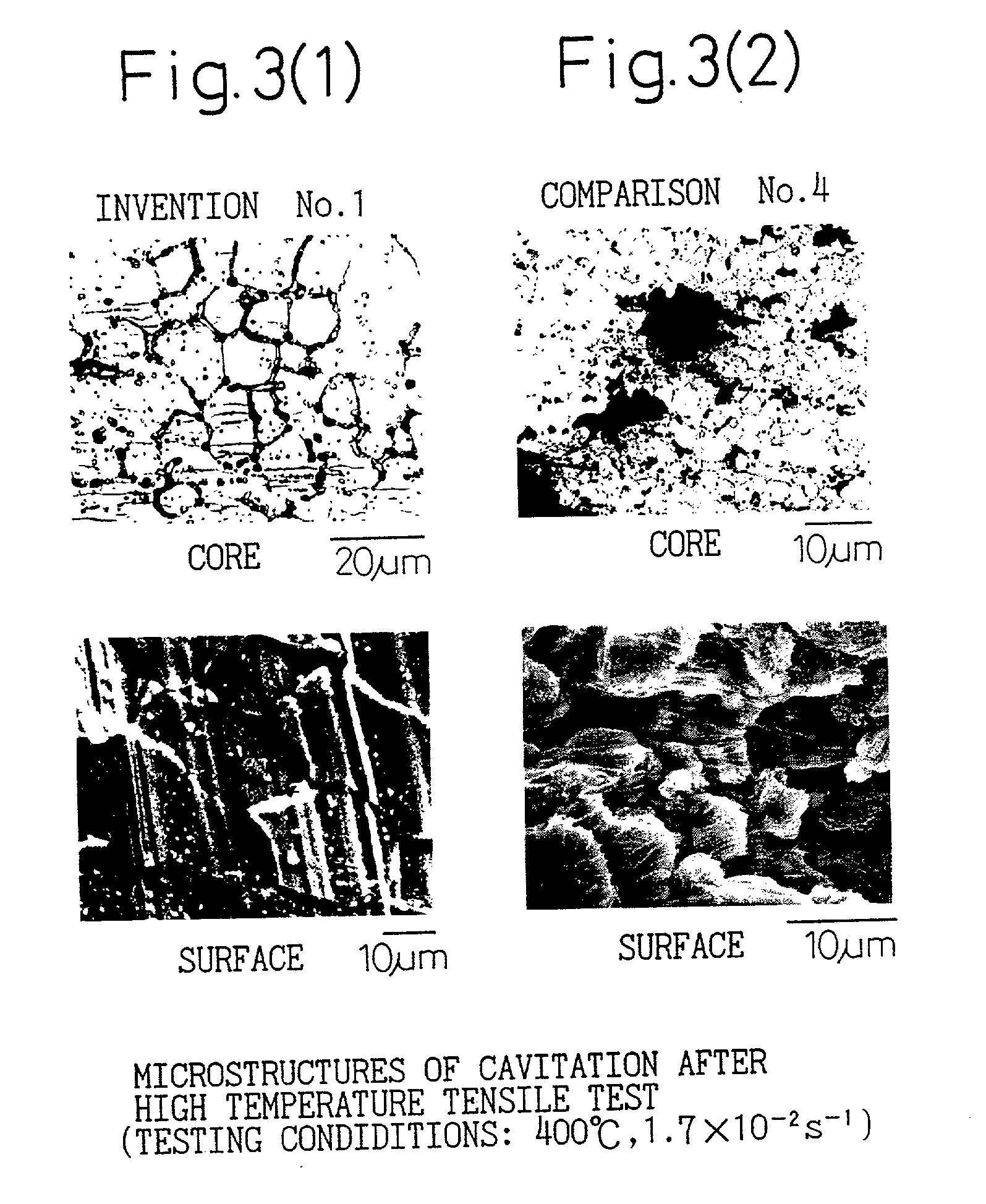Superplastic aluminum alloy and process of producing same
a technology of aluminum alloy and superplasticity, applied in the direction of chemistry apparatus and processes, cores/yokes, transportation and packaging, etc., can solve the problems of high production cost, inability to bring metal elements, and superplasticity cannot be used
- Summary
- Abstract
- Description
- Claims
- Application Information
AI Technical Summary
Benefits of technology
Problems solved by technology
Method used
Image
Examples
example 2
[0047] Aluminum alloy ingots having different chemical compositions summarized in Table 2 were thermomechanically treated as in Example 1.
[0048] Sample No. 5 according to the present invention contained in-situ produced TiC particles having an average particle size of 200 nm in an amount of 0.7 vol % as in Sample 1 of Example 1. Comparative Samples 6 to 8 have the same chemical compositions as those of Comparative Samples 2 to 4 of Example 1, respectively.
[0049] From the thus-produced samples, extrusion test pieces having a diameter of 7 mm and a length of 10.5 mm were cut and subjected to extrusion test with an extrusion ratio of 14, at a temperature of 400 to 500.degree. C., and a strain rate of 3.5.times.10.sup.-2 / s to 3.5.times.10.sup.0 / s. The results are summarized in Table 3. The extrudability was evaluated such that when the extrusion stress was less than that required for JIS 7003 alloy, the tested sample had a better extrudability and when a more extrusion stress was requir...
example 3
[0053] Aluminum alloy ingots having the same chemical composition as that of Sample 1 of Table 1 were thermomechanically treated under different conditions summarized in Table 4.
[0054] Test pieces having a 5 mm dia., 10 mm long gauge portion were cut from the thus-produced samples and subjected to tensile test at temperatures of from 300.degree. C. to 500.degree. C., and at strain rates of from 1.7.times.10.sup.-4 / s to 1.7.times.10.sup.-1 / s. The results are summarized in Table 4.
[0055] Sample 9 of the present invention exhibited superplasticity over wide ranges of temperatures and strain rates.
[0056] Comparative Sample 10 was not homogenization-treated and contained undissolved giant crystallized substances, so that the second hot working failed to form uniform fine-grained structure and superplasticity was not manifested.
[0057] In Comparative Sample 11, the first hot working was performed at a small working degree and the cast structure was not completely destroyed, so that the sec...
PUM
| Property | Measurement | Unit |
|---|---|---|
| Temperature | aaaaa | aaaaa |
| Fraction | aaaaa | aaaaa |
| Fraction | aaaaa | aaaaa |
Abstract
Description
Claims
Application Information
 Login to View More
Login to View More - R&D
- Intellectual Property
- Life Sciences
- Materials
- Tech Scout
- Unparalleled Data Quality
- Higher Quality Content
- 60% Fewer Hallucinations
Browse by: Latest US Patents, China's latest patents, Technical Efficacy Thesaurus, Application Domain, Technology Topic, Popular Technical Reports.
© 2025 PatSnap. All rights reserved.Legal|Privacy policy|Modern Slavery Act Transparency Statement|Sitemap|About US| Contact US: help@patsnap.com



